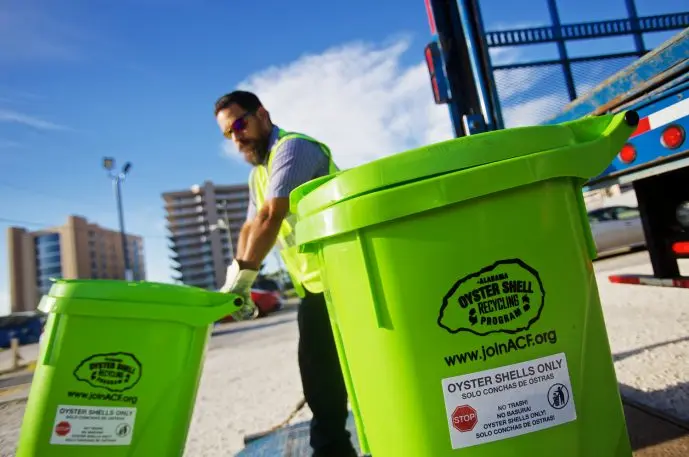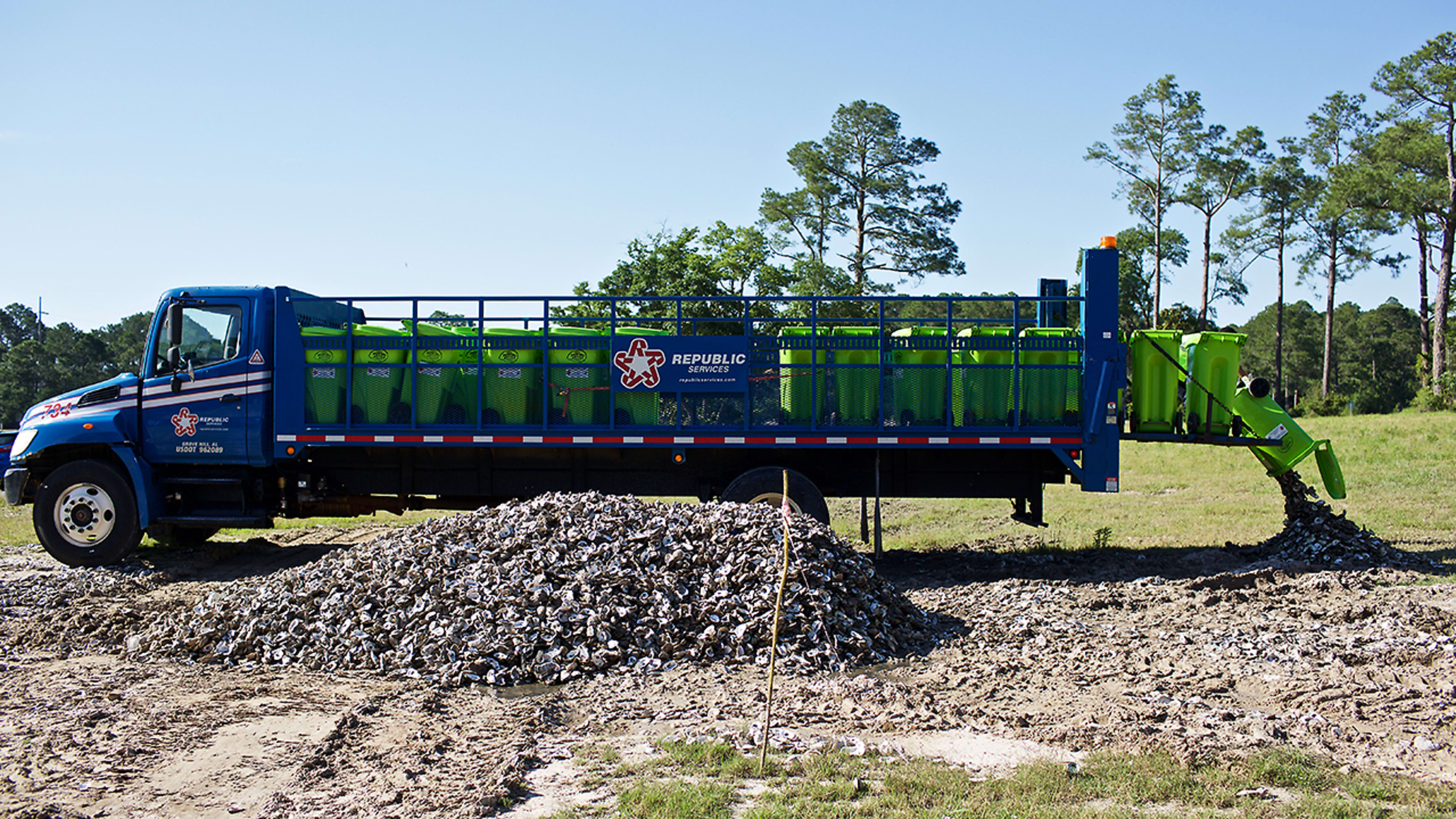Producing up to 500 million pounds of oysters each year, the Gulf Coast region of the United States is a shellfish haven: The area accounts for 67% of the oysters consumed in the U.S. But each oyster slurped down leaves behind a shell, and recycling those shells—instead of sending them to landfill—could actually be the key to rebuilding a coastal region decimated by natural and manmade disasters.

Last October, the Alabama Coastal Foundation (ACF), a nonprofit dedicating to protecting the state’s coastal environment, teamed up with the waste-management company Republic Services to launch an oyster-shell recycling program in the region. It began with just a few restaurants: A designated representative from Republic Services would drive out at 3 a.m. on Mondays, Wednesdays, and Fridays to collect shells left over by diners, and bring them to a nature preserve where they can aerate and “cure” for several months before being returned to the ocean. The program has since scaled up to 29 restaurants, and Mark Berte, the executive director of the ACF, tells Fast Company that interest keeps growing.
While it’s common practice among seafood restaurants to send their empty shells to landfill with the rest of their waste, a handful of regions are beginning to put the shells to more productive use by returning them to the ocean, where they become the building blocks of restored oyster beds.
For oysters to grow, they have to be able to attach to a firm substrate like rock. Along the Gulf Coast, oyster reefs form when young oysters attach to the left-behind shells of other oysters. But decades of over-harvesting, disease, and pollution have begun to decimate oyster reefs, 85% of which globally have disappeared. And in the Gulf region, disasters like the 2010 Deepwater Horizon oil spill have further wrecked the habitats.
By working with Republic Services to collect the discarded shells from restaurants, the ACF wants to contribute to the effort to revitalize the Gulf Coasts’ oyster reefs. In 2012, The Nature Conservancy (TNC) launched an effort to repair the Gulf region following the Deepwater Horizon spill, and as part of that has called for a $150 million investment in oyster-reef restoration, including the rebuilding of 100 miles of reefs. Doing so, TNC claims, will bring jobs to the region and ensure its shellfish industry will continue to thrive.
“The more shells they give us, the more oysters they can keep serving,” Berte says.

The ACF and Republic Services partnership is working toward that goal. Funded by a $243,000 grant from the National Fish and Wildlife Foundation, the program has collected over 2.8 million oyster shells–enough to cover 7.2 acres in the Gulf. Each oyster shell returned to the ocean, Berte says, can become the habitat for 10 baby oysters. Additionally, adult oysters can filter around 15 gallons of water a day–significant for a region plagued with water-quality issues. Because oysters filter out sediment and algae from the water, they support a healthier marine environment for other species. By sucking up excess algae and nitrogen, for example, oysters clear the water and enable more seagrass to grow, which in turn will lead to healthier fish and crab populations.
The grant will last the ACF through the spring of 2018, by which time, Berte hopes to have scaled the program sufficiently to operate without the additional funds. While Republic Services is currently collecting shells without charging the restaurants, they’ll likely attach a fee to the service going forward, says Jennifer Eldridge of Republic Services. “With so many restaurants buying into the program, they’ll likely be willing to pay for it, like they pay to have their trash or recycling collected,” she says.

The idea of oyster-shell recycling programs, Eldridge says, has been around for several years, but only recently took off. The ACF initiative, which centers around Mobile, Alabama, was inspired by a similar project in New Orleans, run by the Coalition to Restore Coastal Louisiana, which has, to date, collected nearly 3,000 tons of oyster shells since launching in 2014. They, in turn, were inspired by a program in Galveston, and Fast Company has previously covered the efforts of the Billion Oyster Project in New York to use reclaimed shells to restore the city’s waterways and ecosystems.
But as these programs expand across the country, Berte says they’re remaining in close communication, and learning from each other. The ACF, in launching this program, also requires participating restaurants to join the Green Coast Council, which promotes sustainable business practices in the region. The oyster recycling program is one element of how the Gulf Coast’s restaurants can begin to work more cooperatively with the environment that fuels them. “We want to make sure they have skin in the sustainability game beyond this program,” Berte says.
Recognize your brand’s excellence by applying to this year’s Brands That Matter Awards before the early-rate deadline, May 3.
